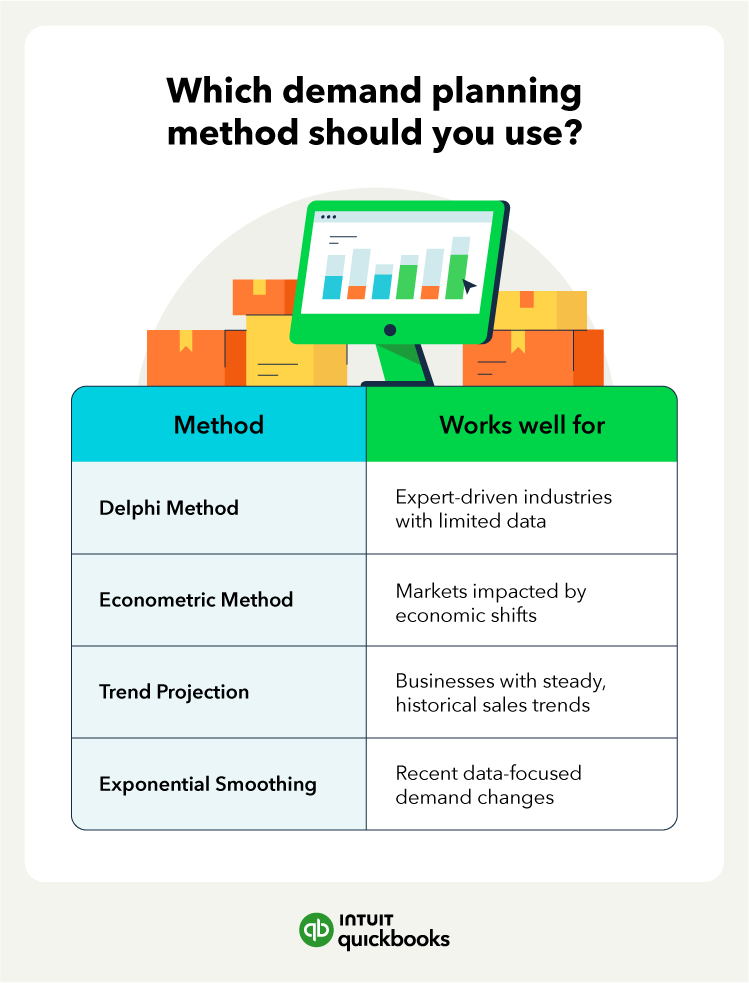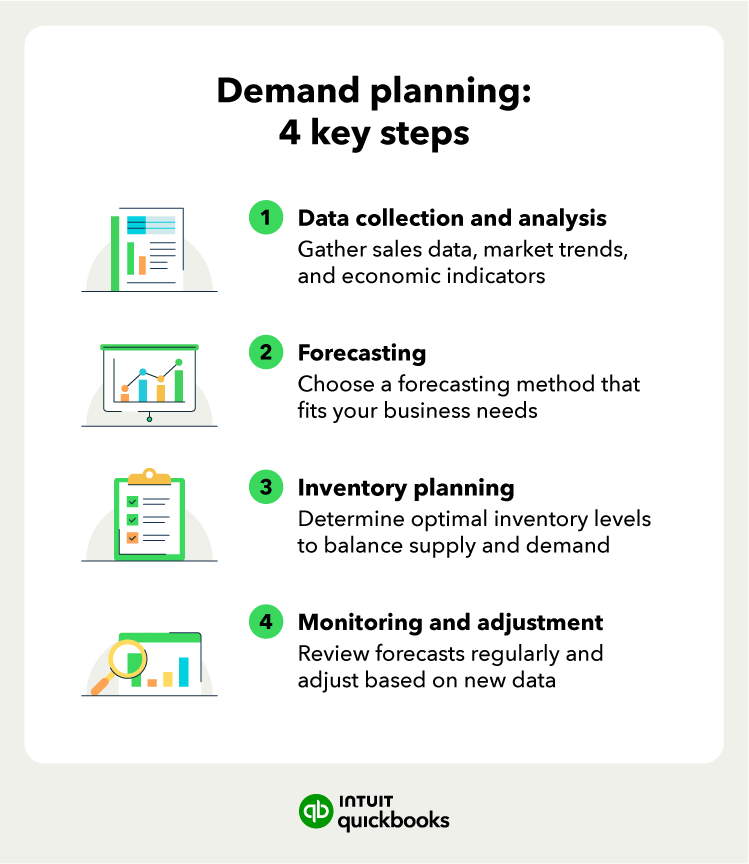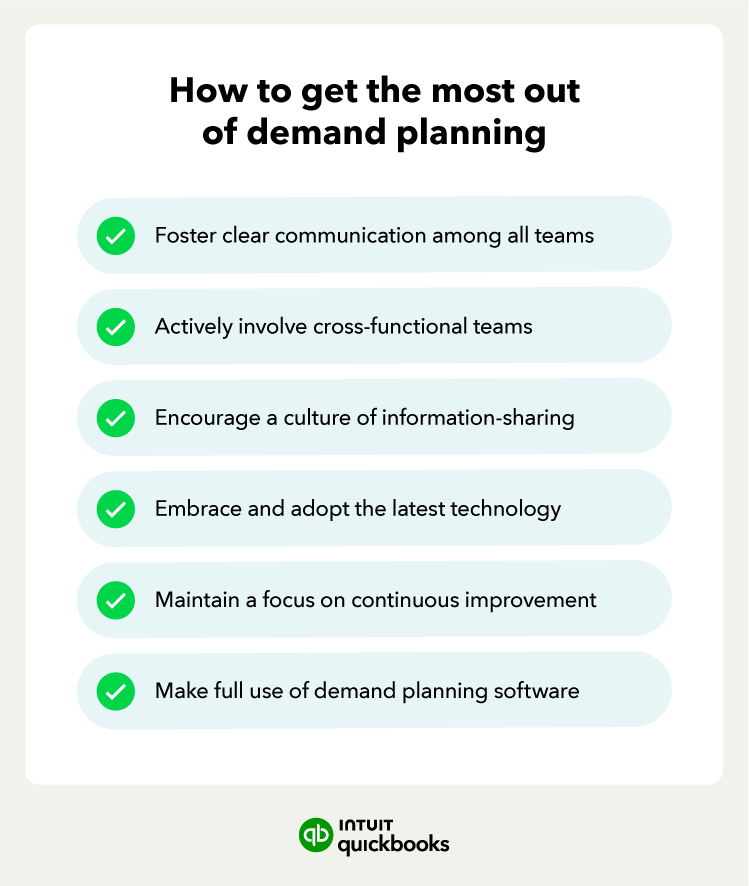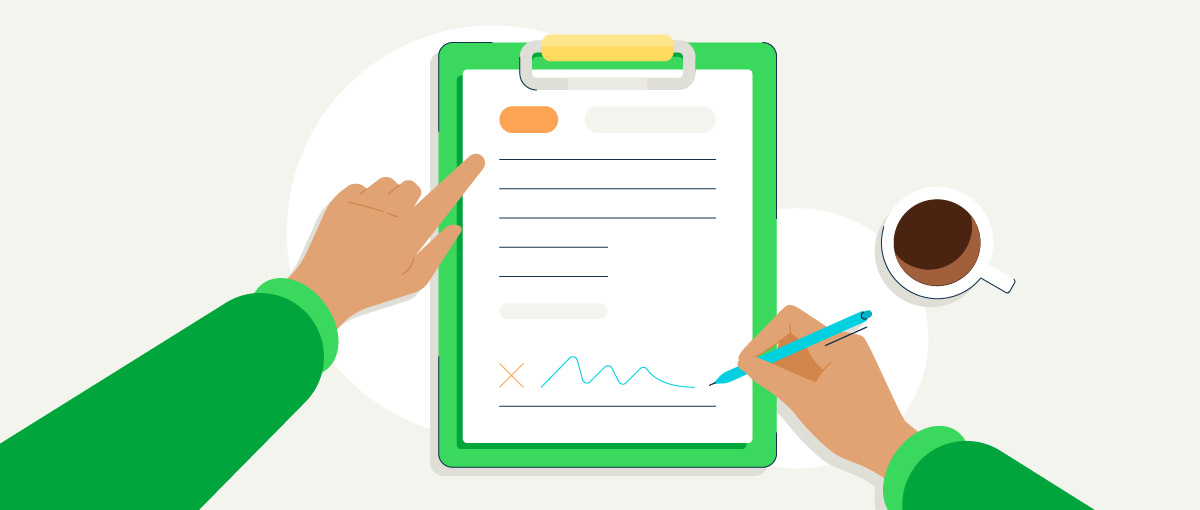1. Data collection and analysis
The first step in demand planning is gathering relevant data. This includes:
- Identifying relevant data sources: Look for data from sales reports, customer orders, and market research.
- Using historical sales data: Analyze past sales to identify trends and patterns that can inform future demand.
- Analyzing market trends and economic indicators: Monitor broader market conditions that could impact your demand, such as economic growth or changes in consumer behavior.
Collecting and analyzing this data can help you create a solid foundation for your demand planning efforts.
2. Forecasting
Once you have your data, the next step is to forecast future demand through:
- Different forecasting methods: Consider methods like time series (looking at past data), causal (looking at related factors), and judgmental (expert opinions).
- Choosing the appropriate method for specific scenarios: Use the method that best fits your business context, whether it’s seasonal trends or new product launches.
Accurate forecasting helps you make informed decisions about inventory and resource allocation.
3. Inventory planning
With a clear forecast in hand, you can move to inventory planning. Here’s what you need to do at this stage:
- Determine optimal inventory levels: Decide how much stock you need to meet demand without overstocking.
- Balance supply and demand: Make sure your inventory matches expected sales to avoid stockouts and excess inventory.
- Manage stockouts and excess inventory: Develop strategies to quickly address any shortages or surpluses.
Effective inventory forecasting ensures you have the right products available at the right time.
4. Monitoring and adjustment
The final step is continuous monitoring and adjustment, which involves:
- Continuously reviewing forecasts: Regularly check your forecasts against actual sales to assess accuracy.
- Making adjustments as needed: Be flexible and ready to change your plans based on new insights or unexpected market shifts.
- Incorporating new data and insights: Stay updated with the latest information to refine your forecasting and planning processes.
By continuously monitoring and adjusting, you can keep your demand planning effective and responsive to market changes.
As you implement these steps, consider using an ERP system with advanced financial management capabilities, like Intuit Enterprise Suite. Its centralized data integration and real-time analytics can enhance your demand forecasting accuracy and streamline your entire planning process.











 Review and update your demand planning process regularly to keep up with new trends, customer behavior changes, or market shifts. This keeps your strategy fresh and effective.
Review and update your demand planning process regularly to keep up with new trends, customer behavior changes, or market shifts. This keeps your strategy fresh and effective.






